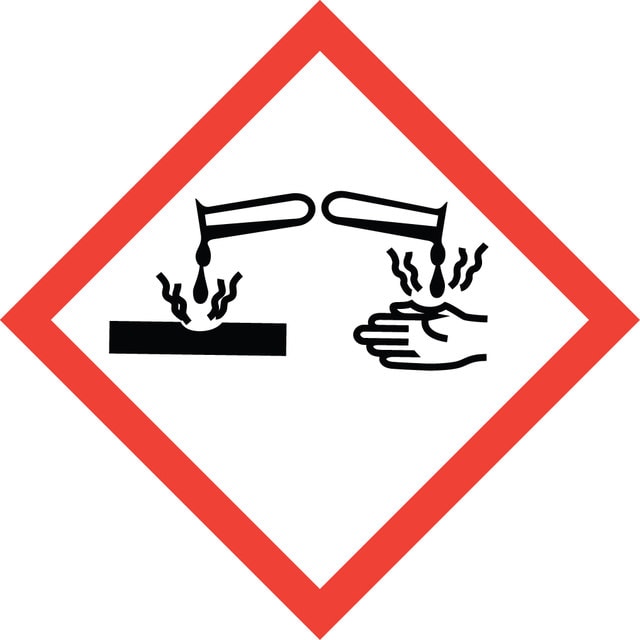等级
pharmaceutical primary standard
API类
chlorhexidine
制造商/商品名称
EDQM
技术
HPLC: suitable
gas chromatography (GC): suitable
mp
134-136 °C (lit.)
应用
pharmaceutical (small molecule)
包装形式
neat
SMILES字符串
Clc1ccc(NC(=N)NC(=N)NCCCCCCNC(=N)NC(=N)Nc2ccc(Cl)cc2)cc1
InChI
1S/C22H30Cl2N10/c23-15-5-9-17(10-6-15)31-21(27)33-19(25)29-13-3-1-2-4-14-30-20(26)34-22(28)32-18-11-7-16(24)8-12-18/h5-12H,1-4,13-14H2,(H5,25,27,29,31,33)(H5,26,28,30,32,34)
InChI key
GHXZTYHSJHQHIJ-UHFFFAOYSA-N
正在寻找类似产品? 访问 产品对比指南
一般描述
This product is provided as delivered and specified by the issuing Pharmacopoeia. All information provided in support of this product, including SDS and any product information leaflets have been developed and issued under the Authority of the Issuing Pharmacopoeia. For further information and support please go to the website of the issuing Pharmacopoeia.
应用
Chlorhexidine EP Reference standard, intended for use in laboratory tests only as specifically prescribed in the European Pharmacopoeia.
包装
The product is delivered as supplied by the issuing Pharmacopoeia. For the current unit quantity, please visit the EDQM reference substance catalogue.
其他说明
Sales restrictions may apply.
警示用语:
Danger
危险声明
危险分类
Aquatic Acute 1 - Aquatic Chronic 1 - Eye Dam. 1
储存分类代码
11 - Combustible Solids
WGK
WGK 3
Richard Price et al.
BMJ (Clinical research ed.), 348, g2197-g2197 (2014-04-02)
To determine the effect on mortality of selective digestive decontamination, selective oropharyngeal decontamination, and topical oropharyngeal chlorhexidine in adult patients in general intensive care units and to compare these interventions with each other in a network meta-analysis. Systematic review, conventional
Matthias Maiwald et al.
PloS one, 7(9), e44277-e44277 (2012-09-18)
Skin antisepsis is a simple and effective measure to prevent infections. The efficacy of chlorhexidine is actively discussed in the literature on skin antisepsis. However, study outcomes due to chlorhexidine-alcohol combinations are often attributed to chlorhexidine alone. Thus, we sought
S Karki et al.
The Journal of hospital infection, 82(2), 71-84 (2012-08-15)
The topical use of chlorhexidine gluconate (CHG) is intended to reduce bacterial density on patients' skin. To assess the impact of body bath or skin cleansing with CHG-impregnated or CHG-saturated washcloths in preventing healthcare-associated infections and colonization. This systematic review
Carolyne Horner et al.
The Journal of antimicrobial chemotherapy, 67(11), 2547-2559 (2012-07-27)
Antiseptic agents are increasingly used for hand hygiene and skin decolonization as key tools for the prevention of healthcare-associated infections. Chlorhexidine, a divalent, cationic biguanide, has a broad spectrum of activity and is one of the most frequently used topical
Karl A Hassan et al.
Proceedings of the National Academy of Sciences of the United States of America, 110(50), 20254-20259 (2013-11-28)
Chlorhexidine is widely used as an antiseptic or disinfectant in both hospital and community settings. A number of bacterial species display resistance to this membrane-active biocide. We examined the transcriptomic response of a representative nosocomial human pathogen, Acinetobacter baumannii, to
我们的科学家团队拥有各种研究领域经验,包括生命科学、材料科学、化学合成、色谱、分析及许多其他领域.
联系客户支持
